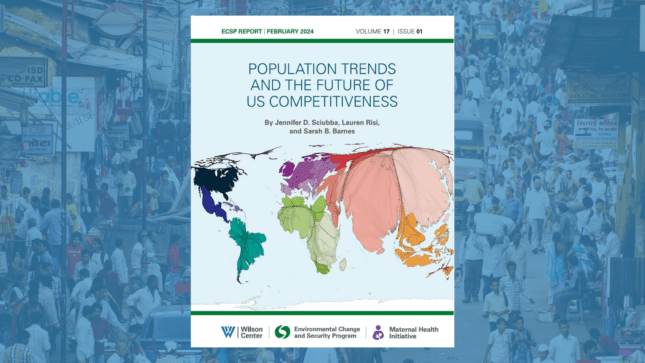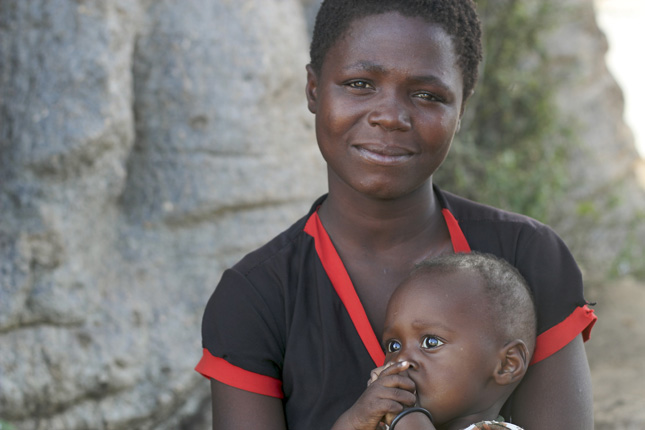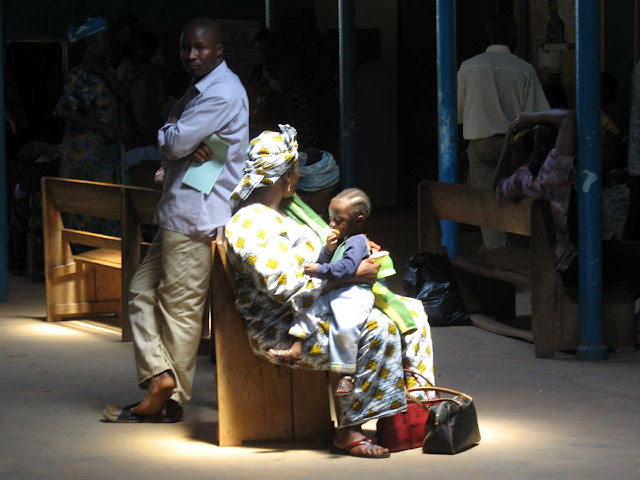-
REPORT LAUNCH | Population Trends and the Future of US Competitiveness
›From the Wilson Center // February 5, 2024 // By Jennifer Dabbs Sciubba, Lauren Herzer Risi & Sarah B. Barnes
This article is adapted from “Population Trends and the Future of US Competitiveness”
Demographic issues intersect with a number of policy priorities on the congressional agenda, including the economy, immigration, health care and foreign policy, but how population trends influence policy outcomes is often overlooked or misunderstood. In a new report, we explore how population dynamics have changed dramatically over the last few decades, and what these changes mean for the economic and security interests of the United States.
-
World Population Day 2021 – Setbacks in Development and Family Planning Slow Progress Along the Demographic Transition
›
Globally, the demographic transition from high to low fertility and mortality has improved quality of life for billions of people over the past several decades. The average number of children born per woman worldwide decreased from nearly 5 in 1950 to 2.47 by 2020. Improvements in infant and child mortality boosted life expectancy at birth from a global average of 47 years in 1950 to over 72 years today. These gains in fertility and mortality were a result of rising incomes and significant investments and improvements in public health, education, and family planning access—18 months into a global pandemic, it’s becoming increasingly apparent that COVID-19 has disrupted these gains, slowing progress along the demographic transition for those countries in the earliest stages. This World Population Day is therefore an important opportunity to recommit to investments in health and education and resume our progress in improving lives for the world’s poorest and most vulnerable.
-
Three Trends to Track in Population-Environment-Security
› Exactly 25 years ago the international community met in Cairo for the 1994 International Conference on Population and Development. In the aftermath of the Cold War, ethnic conflict seemed to be exploding globally and research on the role of population growth and resource scarcity found an eager audience among policy makers struggling to understand this new international disorder. ECSP’s founding in that same year positioned the program as a leader in bringing together the scholarly and policy communities around non-traditional security issues over the last 25 years. The last two-and-a-half decades have brought tremendous change in population trends, environmental change, and the security landscape. Over the next 25 years three trends will shape the agenda of those working on the nexus of population-environment-security issues.
Exactly 25 years ago the international community met in Cairo for the 1994 International Conference on Population and Development. In the aftermath of the Cold War, ethnic conflict seemed to be exploding globally and research on the role of population growth and resource scarcity found an eager audience among policy makers struggling to understand this new international disorder. ECSP’s founding in that same year positioned the program as a leader in bringing together the scholarly and policy communities around non-traditional security issues over the last 25 years. The last two-and-a-half decades have brought tremendous change in population trends, environmental change, and the security landscape. Over the next 25 years three trends will shape the agenda of those working on the nexus of population-environment-security issues. -
Unequal Women, Insecure World: The State of the World’s Population in the Age of Inequality
›
Women in Madagascar are scrambling to access contraception—while they still can. By the end of this year, one of the most prominent organizations that provides family planning services in the country will have shut down 21 of its 22 mobile contraception clinics, an important service in a country where transportation and roads are in poor shape.
-
Zika Virus Prompts El Salvador and Others to Discourage Pregnancy – What Are the Potential Consequences?
›The government of El Salvador took a truly extraordinary step in an attempt to control the rapidly spreading Zika virus last week by asking its citizens to avoid getting pregnant from now until 2018. Yes, you read that right.
-
The Middle East’s Demographic Destiny
›February 25, 2011 // By Jennifer Dabbs SciubbaThe original version of this article, by Jennifer Dabbs Sciubba, appeared on her blog. Sciubba will be speaking at the Wilson Center on March 14 about her newest book The Future Faces of War: Population and National Security.
The so-called “arc of revolution” sweeping across the Middle East and North Africa has some demographers feeling smug. In Egypt, Tunisia, Algeria, Jordan, and Lebanon the population ages 15-29 – a key group for demographers – is very large, about 41-50 percent of all adults ages 15-59. No matter where you’re born, this life period is significant because during this time young adults expect to finish their education, get a job, get married, maybe start a family, and have some say in the way they are governed. As many have noted, the problem in each of these countries is that the desires of young adults are being dashed as they are shut out of economic, political, and even social opportunities. The result is all over the headlines.
Aside from structural failures like corruption and inattention of politicians to creating jobs, why are young people so disadvantaged? The answer lies in demography. Opportunities for young adults are limited in these countries because of what demographers refer to as “cohort crowding,” a situation that results when an age group, in Tunisia’s case those aged 25-29, is significantly larger than the preceding age group. Generally, jobs cannot be created fast enough to keep pace with this demographic bump, so those in the large cohorts are “crowded” out of the labor market. This situation turns into protest and violence when youth from large cohorts fall short of the living standards of preceding generations, which are smaller. In a 2009 Pew Global Attitudes survey, 50 percent of respondents ages 18-29 in Egypt said they thought children born today would be worse off than their parents. In Jordan and Lebanon, 38 and 40 percent, respectively, of respondents had a similarly depressed attitude.
Continue reading on The Future Faces of War: Population and National Security blog.
Sources: Pew Research Center, U.S. Census Bureau.
Photo Credit: “DS-RY028 World Bank,” courtesy of flickr user World Bank Photo Collection (Dana Smillie). -
Where Have All the Malthusians Gone?
›Forget youth bulges and population bombs; lately, the population story has been all about the baby bust. The cover of this month’s Foreign Policy features “Old World: The graying of the planet – and how it will change everything,” by Phillip Longman, and author Ted Fishman recently appeared in The New York Times and on NPR to talk about his book, Shock of Gray: The Aging of the World’s Population and How It Pits Young Against Old, Child Against Parent, Worker Against Boss, Company Against Rival and Nation Against Nation. Nicholas Eberstadt covered similar issues in Foreign Affairs with his article, “The Demographic Future: What Population Growth – and Decline – Means for the Global Economy.”
To the extent that policymakers take away a sense of urgency to reform retirement institutions and potentially reevaluate military strategy, the recent spate of publications about aging is useful. But policymakers should not be misled into thinking that the population tide has turned and resources for education, development, and family planning are no longer necessary. While global population growth is slowing, it has not stopped, and the political and economic consequences of continued growth and youthful age structures across most of the Global South will be dire.
A Population Bomb…of Old People
Eberstadt, Fishman, and Longman argue for the need to prepare for a future where there are large proportions of elderly dependents and relatively few workers to support them, and they chronicle the many challenges that may result, including political resistance. The October protests in France against raising the pensionable age from 60 to 62 — which, despite the hullabaloo, fall far short of the levels needed to improve France’s long-term economic position — are but one example of the reform resistance they warn about.
The concern is that while the Global North – Europe and Japan in particular – scramble to meet the needs of their older citizens and preserve the health of their economies, their powerful positions in the international system are at risk. As Fishman states, “It now looks as if global power rests on how willing a country is to neglect its older citizens.” China, a country on the cusp of aging, has thus far chosen neglect over meaningful investment, stoking more fear that the Global North may fall behind.
Though a focus on economic health is useful, other aspects of their arguments do a disservice, particularly those that start from the premise that the days of Malthusian angst over the planet’s ability to support a rapidly growing population are long gone.
Echoing Fred Pearce in his The Coming Population Crash and Our Planet’s Surprising Future, Longman argues without reservation that dangerous population growth is a thing of the past, and instead, the world faces a “population bomb…of old people.” He even goes so far as to claim that “having too many people on the planet is no longer demographers’ chief worry; now, having too few is.”
I have to ask: what demographers did he talk to? Articles published over the last year in the field’s top journals — Demography, Population and Development Review, and Population Studies — certainly explore low fertility, but they also cover a range of youth- and growth-related issues and topics such as mortality, teen parenthood, and immigration. And within the field of political demography in particular there is still quite a lot of attention being paid to the implications of population growth and youth bulges on civil conflict and human security. Even Foreign Policy, in which Longman’s article appears, publishes an annual Failed States Index that argues there is an important relationship between demographic pressure and state collapse.
As studies like the Failed States Index and the National Intelligence Council’s Global Trends project show, contrary to Pearce et al., carrying capacity arguments are not completely outmoded. Regardless of how extreme the impact of an aging population will be on developed nations in the near future (although the United States will almost certainly be less affected than others), in many parts of Africa, South Asia, and the Middle East, population growth is straining local water and land resources and creating instability — issues that will likely be exacerbated by climate change.
Geographic Bias
If there really is more attention being paid among demographers to low fertility it may well be due to institutional and geographic bias. After all, most of the funding for demography comes from Western nations concerned with their own decline. Likewise, all the top journals are American or European.
Though it is correct that most advanced industrial states are aging because of low fertility, for a large part of the world, population growth is still the number one issue. Declining fertility in most countries of the world means that populations are getting older, but this is not the same as saying they have a problem with aging. Between 1980 and 2010, the median age of the less developed countries, excluding China, rose from 19 to almost 25 and the world’s least developed countries saw a rise from 17 to 20 years. Median age in more developed countries, however, went from 32 to 40 — a level twice that of the least developed countries.
Many of the low-fertility countries Longman cites — Iran and Cuba, in particular — are exceptions among developing countries, rather than the rule. The UN Population Division estimates that sub-Saharan Africa will gain 966 million people by 2050 – more than the current population of all of Europe – and, as Richard Cincotta and I have both argued on this blog previously, the total fertility rate (TFR) projections used in those estimations are likely low. Rapid population growth in sub-Saharan Africa has already exacerbated many countries’ abilities to meet the growing needs of their populations, causing civil conflict and instability, and will continue to do so in the future.
Why is it Important to Get it Right?
Alarmism is useful when it grabs the attention of policymakers and a public that is overloaded with information, but it is also risky. Both Pearce and Longman take jabs at Paul Ehrlich because his “population bomb” never exploded. What they fail to note is that Ehrlich’s predictions could have proven right, except that he was successful at scaring a generation of policymakers into action. Funding towards population programs increased greatly in the wake of such research. If those of us who write about the dangers of aging are successful, perhaps we will be so lucky to look as foolish as Ehrlich one day.
If these warnings fall on deaf ears and policymakers do not act to reduce the burden of entitlements, certainly budgets will be strained beyond capacity and the dire future predicted by Fishman, Pearce, and Longman may well become a reality. On the other hand, if policymakers similarly disregard carrying capacity issues in the developing world, conflict and misery are sure to continue in these places and may well worsen.
Jennifer Dabbs Sciubba is the Mellon Environmental Fellow in the Department of International Studies at Rhodes College. She is also the author of a forthcoming book, The Future Faces of War: Population and National Security. Follow her on Twitter at @profsciubba for more on population-related issues.
Sources: Foreign Affairs, Foreign Policy, NPR, National Intelligence Council, The New York Times, Population Reference Bureau, Reuters, UN.
Photo Credit: Adapted from “Protest/Manifestation,” courtesy of flickr user lilicomanche. -
Misguided Projections for Africa’s Fertility
›By assuming that sub-Saharan Africa’s total fertility rate will decrease to 2.5 children per woman by 2050, the most recent population projections issued by the Population Reference Bureau likely continue to underestimate fertility for Africa. Though northern Africa has significantly lowered fertility, sub-Saharan Africa’s TFR is still 5 children per woman. Achieving the levels projected by PRB or the United Nations will largely depend on whether the conditions that led to past fertility declines for other states can be established in sub-Saharan Africa.
Demographers have identified numerous factors associated with fertility decline, including increased education for females, shifting from a rural agricultural economy to an industrial one, and introduction of contraceptive technology. Sub-Saharan Africa is only making slow progress in each of these areas.
Surveying Obstacles to Development
Primary school enrollment is up, but the pace of improvement is declining. Meanwhile, gender gaps persist: Enrollment for boys remains significantly higher than for girls. Girls’ education is associated with lower fertility, partly because education helps women take charge of their fertility and also because education influences employment opportunities. Increased female labor force participation has been shown to increase the cost of having children, and is therefore associated with initial fertility declines.
Disease is one wildcard for Africa that limits the utility of past models of demographic transition in the African context. HIV/AIDS is decimating sub-Saharan Africa’s adult workforce and creating shortages of teachers that will impede future efforts to boost primary school enrollment. According to the United Nations, the number of teachers in sub-Saharan Africa needs to double in the next five years to reach Millennium Development goals.
Development that would shift the region’s economies from agriculture to industry is also lagging. While several West African countries are seeing some gains, the African continent on the whole faces major structural impediments to development. In The Bottom Billion, Paul Collier points out that many of these countries may have “missed the boat” to attract investment and industry that would pull the region out of poverty, partly because the least developed countries are still not cost-competitive enough when compared with current centers of manufacturing, like China.
Finally, there remains a high unmet need for family planning. One in four women aged 15 to 49 who are married or in union –- and who have expressed an interest in using contraceptives — still do not have access to family planning tools. In general, maternal mortality remains high and adolescents in the poorest households are three times more likely to become pregnant and give birth than those in the richest households, according to the most recent UN Millennium Development Goals report.
Sub-Saharan Africa: Off the Radar?
Sub-Saharan Africa suffers from a lack of attention by the international community and lack of political capacity at home. Many countries in the region are plagued by civil strife and poor governance, and developed countries continue to fall short of development assistance pledges. There is not the same sense of urgency today among developed countries about the global population explosion as there once was. Cold War politics and the environmental and feminist movements motivated much of the study of fertility and funding of population programs during the second half of the 20th century. Attention by governments and NGOs sped the fertility transition among many countries.
Today, the world’s wealthiest countries are not concerned primarily with Africa’s problems, but rather are more concerned with their own population decline and with the national security implications of population trends in areas associated with religious extremism. The recession has further hindered the flow of development funds.
Fertility is the most difficult population component to predict, and demographers must draw on the experiences of other regions to inform assessments of Africa’s population patterns. Demographers seem to be overconfident that Africa’s fertility will follow the pattern of recent declines, particularly in Latin America, which were more rapid than Western Europe’s decline due to the diffusion of technology and knowledge.
Once states begin the demographic transition towards lower fertility and mortality, they have tended to continue, with few exceptions. Therefore, most projections for Africa assume the same linear pattern of decline will hold. Yet, the low priority of Africa’s population issues among the world’s wealthiest states, combined with shortfalls in education, development, and contraception, may mean that the demographic transition in Africa will be slower than predicted.
Projections are useful to give us a picture of what the world could look like if meaningful policy changes are made. In the case of sub-Saharan Africa, prospects for these projections are dim.
Jennifer Dabbs Sciubba is the Mellon Environmental Fellow in the Department of International Studies at Rhodes College in Memphis, Tenn. She is also the author of a forthcoming book, The Future Faces of War: Population and National Security.
Photo Credit: “Waiting,” ECWA Evangel Hospital, Jos, Nigeria, courtesy of flickr user Mike Blyth.
Showing posts by Jennifer Dabbs Sciubba.



 Exactly 25 years ago the international community met in Cairo for the
Exactly 25 years ago the international community met in Cairo for the 





